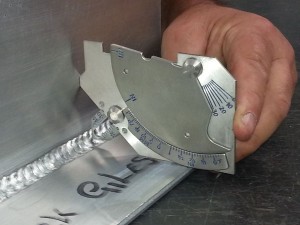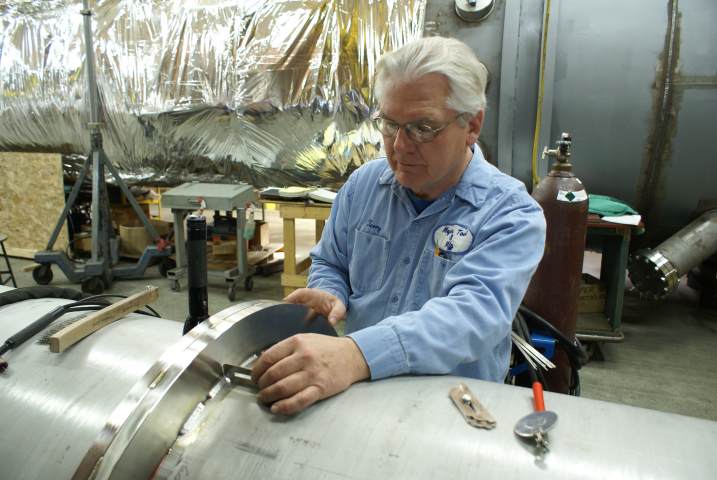Leading Tips for Effective Welding Inspection in Gilbert Arizona: A Comprehensive Guide
Leading Tips for Effective Welding Inspection in Gilbert Arizona: A Comprehensive Guide
Blog Article
Checking Out the Relevance of Welding Assessment in Industrial Applications: Safeguarding Versus Failings and Enhancing Longevity
Welding inspection offers as a crucial line of defense in industrial applications, ensuring the structural stability and dependability of bonded components. By methodically identifying issues such as porosity and incomplete combination, evaluations not only stop failings however also extend the life-span of important properties.
Duty of Welding Inspection
Welding examination acts as an essential secure in industrial applications, guaranteeing that welded frameworks meet defined criteria of high quality and safety. This process involves an organized assessment of welds to confirm their integrity, toughness, and conformity with well established codes and specs. The duty of welding examination is multifaceted, incorporating both visual analyses and non-destructive testing approaches, which may include ultrasonic, radiographic, or magnetic bit testing.

Additionally, welding evaluation plays an essential role in regulative conformity. Inevitably, the duty of welding inspection is vital in advertising safety and security, enhancing performance, and securing financial investments in industrial framework.
Usual Welding Problems

One of the most common flaws is porosity, characterized by tiny gas pockets caught within the weld metal. This takes place due to pollutants or inappropriate shielding gas, jeopardizing the weld's stamina. One more considerable defect is incomplete combination, where the weld steel fails to bond effectively with the base material, potentially resulting in structural weaknesses.
Cracks can likewise establish throughout or after the welding procedure, frequently credited to thermal tensions or incorrect air conditioning rates. Furthermore, undercutting, where the base metal is eroded along the weld bead, can compromise the joint and is commonly brought on by too much warmth input or incorrect technique.
Furthermore, lack of infiltration happens when the weld steel does not get to the origin of the joint, resulting in poor strength. Recognizing these common flaws is vital for assessors and welders alike to ensure that welded frameworks meet security and efficiency criteria, eventually protecting against prospective failings in commercial applications.
Benefits of Routine Assessments
Regular assessments function as an essential protect in making sure the reliability and longevity of bonded structures. These evaluations identify possible problems and weaknesses that might endanger the honesty of welds, allowing for timely remediation before problems escalate. By applying an organized inspection routine, organizations can dramatically reduce the risk of disastrous failings that may bring about costly downtime, equipment replacement, or perhaps accidents.
In addition, routine assessments add to improved top quality control throughout the welding procedure. By sticking to a regular examination schedule, firms can ensure that their welding techniques fulfill established quality benchmarks and best practices. This not just cultivates a society of responsibility yet additionally motivates constant enhancement among welding personnel.
In enhancement, normal inspections help with much better upkeep planning. By recognizing deterioration early, organizations can purposefully set up replacements and repair work, lessening disruption to procedures. This positive approach eventually results in extensive property life check my site expectancy and boosted total efficiency.
Last but not least, a dedication to normal assessments can enhance a company's track record in the industry. Stakeholders and customers significantly value companies that prioritize security and quality, thus boosting count on and possibly causing increased company possibilities.
Industry Specifications and Regulations
Sticking to sector requirements and guidelines is a fundamental element of welding examination that complements the benefits of routine analyses. These criteria, established by organizations such as the American Welding Society (AWS) and the American Society of Mechanical Designers (ASME), supply a structure for ideal methods in welding processes, materials, and examination techniques. Conformity with these policies makes certain that welds fulfill the called for top quality and safety and security criteria, dramatically decreasing the danger of structural failures.
Governing bodies like the Occupational Safety and Health Management (OSHA) even more apply guidelines that secure employees and the setting during welding procedures. By following these established standards, sectors can enhance the dependability of their structures and components, ensuring they execute as intended under numerous functional conditions.
In addition, adherence to sector standards fosters consistency in quality assurance, promoting smoother interaction amongst stakeholders and governing companies. This positioning not only minimizes responsibility threats however likewise enhances the integrity of organizations in competitive markets. Ultimately, conformity with welding requirements and policies is not merely a lawful responsibility; it is an important investment in safety and security, efficiency, and long-term functional success.
Future Trends in Welding Assessment
As industries continue to advance, the future of welding assessment is poised to integrate advanced modern technologies that enhance precision and effectiveness. One of the most considerable patterns is the fostering of automation and robotics in evaluation procedures. Automated systems can carry out inspections quickly, minimizing human error and raising throughput click for info in producing settings.
Additionally, the assimilation of expert system (AI) and device learning algorithms will certainly enable predictive analytics, enabling real-time assessments and aggressive maintenance (Welding Inspection Gilbert Arizona). By examining information from previous evaluations, these modern technologies helpful resources can identify patterns that might show potential failings, thus extending the life expectancy of bonded components

Moreover, the trend towards digitalization will certainly result in improved data management systems that assist in much better tracking, reporting, and conformity with industry standards. In summary, the future of welding evaluation is identified by technological innovations that guarantee to substantially boost integrity, security, and operational effectiveness in various industrial applications.
Verdict
Finally, welding evaluation offers an essential function in making sure the integrity and sturdiness of bonded frameworks across different commercial applications. By recognizing problems such as porosity and insufficient combination, normal evaluations play a considerable role in danger mitigation and quality assurance. Adherence to industry standards and regulations better boosts operational security and reliability. As advancements in technology remain to progress, the future of welding assessment promises increased accuracy and performance, eventually contributing to the long life of vital infrastructures.
Welding examination serves as a crucial line of protection in industrial applications, making certain the architectural honesty and dependability of bonded components.Welding assessment serves as an important safeguard in commercial applications, ensuring that bonded frameworks meet specified criteria of quality and security - Welding Inspection Gilbert Arizona. Ultimately, the function of welding examination is essential in promoting security, improving efficiency, and safeguarding financial investments in industrial facilities
These standards, developed by companies such as the American Welding Society (AWS) and the American Culture of Mechanical Engineers (ASME), offer a structure for finest methods in welding processes, products, and evaluation methods.In verdict, welding inspection offers a crucial function in making certain the stability and toughness of bonded frameworks across numerous commercial applications.
Report this page